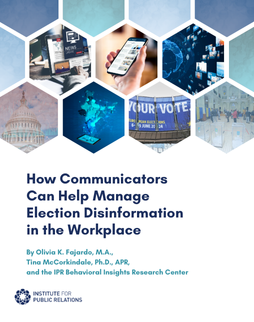After the entire world shifted to virtual events in response to COVID-19, it’s no surprise that virtual is now here to stay. Virtual events have the advantage of reaching a far larger and more diverse audience than their in-person counterparts, making events accessible to attendees who might not have the time or budget to commit to attending in person.
In fact, 73% of B2B marketers and sales leaders believe virtual events are the best way to generate quality leads, which makes sense when you consider the sheer number of attendees a virtual event can attract. Of course, lead generation is just one part (albeit an important part) of what makes an event a success.
On the other hand, 77% of attendees prefer in-person events. Those are difficult statistics to reconcile. How do event professionals find that balance of profitability and engagement, creating rewarding experiences for attendees while optimizing marketing and sales efforts
Hybrid Events: The Perfect Pairing?
Hybrid events offer the best of both worlds, allowing you to capture the breadth of engagement that comes with a virtual event and the depth of engagement you can achieve in person. However, hybrid comes with its own set of challenges.
Once an event goes hybrid, it takes more than combining virtual and in-person audiences. The experience for each audience needs to be comparable – not the same, but just as rewarding. That’s an important distinction, especially for marketers who are responsible for attracting attendees and capitalizing on any generated leads.
Two Strategies, One Event
Committing to hybrid means committing to marketing to two separate audiences. While your efforts must be consistent across each audience, it’s important not to sub-optimize the experience either by treating in-person and virtual attendees the same.
There are simply some experiences only available to in-person attendees, and some digital experiences will be best suited for virtual attendees. There’s plenty of opportunity for overlap, but when speaking to attendees, generating interest in your events, and following up on post-event leads, it’s important to keep attendees’ individual experiences in mind.
For example, how does the registration process differ for virtual and in-person attendees? What sessions are available exclusively to each audience? What are the pain points and benefits for each audience, and how can you address them?
Be intentional about creating a marketing strategy that promotes the differences in the virtual and in-person experiences but also highlights the experiences your two audiences will share. That way, for any experience missed by either audience, there’s another experience gained.
Adopt an Audience-Centric Tech Stack
Your event tech plays a critical role in successfully balancing in-person and virtual audiences. With the right platform, you can ensure your organization and your attendees are getting the most out of your events.
Here are just a few items to check off your list when balancing the needs of in-person and virtual attendees:
— Unique registration options for different audiences, including virtual, premium virtual, and in-person
— Automated email campaigns for each registration type and for individual attendees based on their chosen event agenda
— AV production and streaming capabilities that will make your virtual attendees feel like they’re in the room at your event
— A meetings platform that allows for breakout rooms for attendees to connect and engage with your content
— Data collection and engagement scoring capabilities to shine a light on the needs of your various audiences, including live polling, surveys, Q&As, session check-ins, appointments data, and more
Finding the Right Balance
With so many amazing benefits of in-person and virtual events, it’s important to build an event strategy that capitalizes on those benefits (and minimizes possible disadvantages) to strike a balance that allows for optimal engagement across all audiences.
For a deeper dive into attendee engagement, download the whitepaper from Cvent, “Dialing Up Your Event Engagement.”



